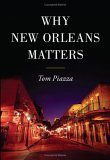Ars Longa, Vita Brevis September 5, 2011
Posted by The Typist in je me souviens, New Orleans, NOLA, Remember, second line, Toulouse Street, We Are Not OK.Tags: Micheal Showers
add a comment
Cross-posted at the Treme blog BackOfTown.com
The tragic death by drowning of actor Micheal Showers, who played New Orleans police Capt. John Guidry in “Treme,” has an eerie resonance both for fans of the show, echoing the death of John Goodman’s character Creighton Bernette. Showers’ death has been ruled a drowning, but in the missing persons report filed by his girlfriend she indicated he was suffering from depression, anxiety and had been diagnosed with multiple sclerosis. There is no official report that his drowning was other than accidental.
While I suspect most New Orleanians have put such thoughts behind him, his death should register beyond the confines of a television show. Official suicide rates tripled in New Orleans in early 2006, the period represented by Season One and Bernette’s fateful ferry ride. Mortality rates spiked by one third, based on a study of Times-Picayune death notices that included displaced residents who died elsewhere. (Conflicting studies focusing on official, local deaths poo-poohed this notion but disregarded that in that period over half the city’s residents remained displaced). In the evacuation trailer parks to the north, fifty percent of residents met the criteria for Major Depressive Disorder, and the suicide rate in the parks was 17 times the national average.
Some (many) may think this post disrespectful of the dead, to speculate on how Showers met his death by drowning, but a diagnosis of multiple sclerosis echoes the experience of so many of those who made up the spike in post-Katrina mortality, the sense that they had lost the life they had before with no prospect of recovery. Bernette was, like most Treme characters, a composite, based both on Ashley Morris and documentary filmmaker Stevenson Palfi, who took his own life post Katrina Palfi lost not only his Mid-City home but files, photographs and film that helped produce his documentaries “Piano Players Rarely Play Together” and an unfinished film on Allen Toussaint.
Whatever brought Showers to the edge of the river, a breath of fresh air to clear his head after a night of drinking, or an ultimate moment of despair, something about his death resonates in a way most people in New Orleans would rather not contemplate but then I’m not most people, spent too many months in 2005 and 2006 tracking and cataloging the dead, too many hours each January compiling an annual list of all the victims of murder. In my own space at Toulouse Street (and formally on Wet Bank Guide), we remember.
Treme is ultimately about the resilience of the people of New Orleans, their insistence to save not just a bit of real estate but a culture and a way of life, and that resilience is more powerful and poignant against the unspoken backstory that Creighton Burnette’s death hints at, a tripled suicide rate, thousands dead from lack of medical care or just the loss in the elderly of the will to live. It is important to remember not only the 1,753 official Katrina deaths but the over 4,000 carefully cataloged by journalist Robert Lindsay five years ago.
Treme is about the Last Battle of New Orleans but the casualties are mostly off screen, like the millions of Civil War dead that haunt the soul of every bushwhacker turned Western gunslinger, and Showers’ brings that back to mind. RIP Micheal Showers, and I’m sorry if you and yours think I have hijacked that particular and personal sorrow but it so clearly brings back the desperation and loss that makes the triumphs of survival depicted in Treme more noble. You were a small part in the great machine of a film that reminds the rest of America–long since moved on–that we in New Orleans second line for our dead and why we do so and for your part in that, in every snap of a tourist’s camera as the band and joyful mourners pass, every second line from now on is in some small way for you.
















